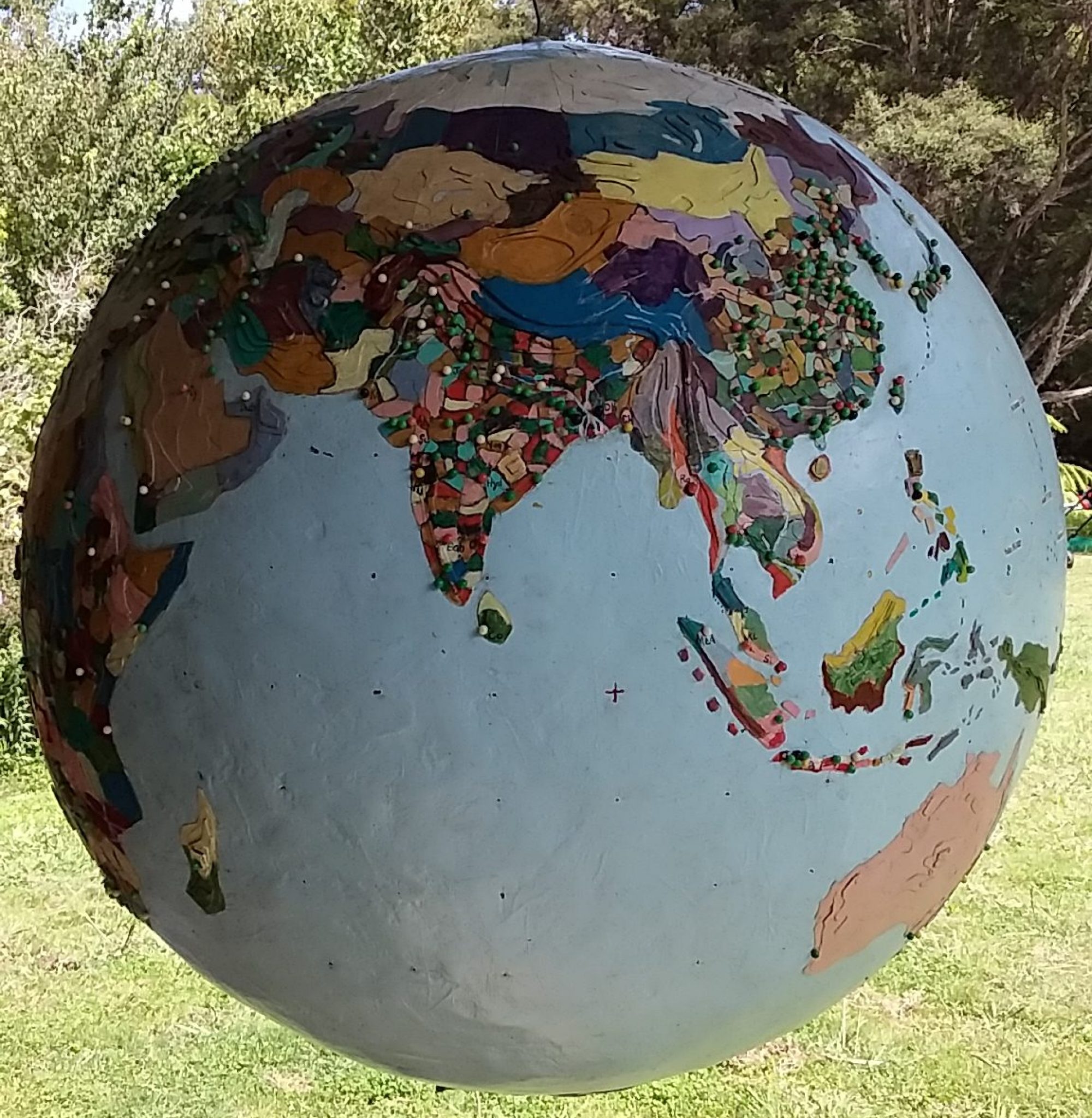Millisphere, noun. A region with approximately one thousandth of the total world population, around seven million people.
Last Tuesday I saw the new crescent moon appear in the winter sky and I warmly remembered the tropics. On the island of Java (population 145 million) in Indonesia (over 260 million and doubling every 35 years) I knew that all hell would be breaking loose as a hundred million Muslims hit the road for Idul Fitri (Eid-al-Fitr in Arabic) the festival that marks the end of Ramadan.
A few days on either side of Idul Fitri is not a good time to travel in Java and I can remember once pushing my travel companion up into a baggage car at the end of a packed passenger train so that we could make the ferry connection to Bali.
We had been in Surabaya during Idul Fitri and we had been randomly invited in for ice-cream and a game of scrabble by a widow who prided herself on her command of the English language. During Idul Fitri it is considered good form to host some wayfaring strangers.
With twenty millispheres on a land area about the size of the North Island of Aotearoa, Java is world’s the most populace island and the millisphere of Surabaya (metropolitan population nearly 7 million) includes Indonesia’s second largest city.
I’ve passed through this congested, chaotic, polluted metropolis a couple of of times, but I am tempted to go back and check out the changes since the election of Surabaya’s Green mayoress, Tri Rismaharini.
Affectionately known as “Bu (Mother) Risma,” she is an architect with a masters in Urban Development and she headed Surabaya’s Town Planning Department before winning the mayoralty in 2010.
Since 1999 Indonesia has experienced one of the most radical decentralisation programs in the world. During the 1998 Asian economic meltdown it was observed that Surabaya was more financially resilient than Jakarta, where the state had a strong (and often corrupt) guiding hand in the capital’s economy.
In 2012 Surabaya was awarded the ASEAN Environmentally Sustainable City award. Today it takes 17 days to process a foreign direct investment application in Surabaya compared with 50 days in Jakarta.
Mayor Rismaharini’s policy was to make the most of “empty” land. Under her leadership the city constructed sixty public parks with Wi-Fi access, libraries and sports facilities. These parks are used for public meetings, weddings and “water absorptions spaces”. Unlike Jakarta, Surabaya now has virtually no flooding.
“Bu Risma” developed a partnership with the kampongs (villages) that make up Surabaya. The city would repair the lanes (designed to exclude cars) and drains and the residents cleaned the rubbish out of the canals and established and maintain the landscaping, creating an urban forest of green lanes and streets. Fish farms have returned to the river as the water quality improves and there is an active mangrove regeneration program.
The new mayoress inherited a rubbish crisis – common to many large Indonesian cities. Surabaya’s main rubbish dump (the Keputih Disposal Area) had just been closed because of opposition from local residents (and because it was full). The amount of waste Surabaya now produces has been halved since 2010.
Utilising aid from a sister city in Japan, Surabaya generates energy by burning rubbish and methane from landfills and now collects data on waste volume and points of waste generation etc. It has created composting stations and “waste bank portals” where the city buys recyclables, crediting the resident’s account with an app. on their phone.
In the last decade “Green and Clean” Surabaya has seen big changes in the liveability of the city. “There is a new sense of vitality and common purpose,” residents report. The city runs an annual essay writing competition for school children on the subject: “If I were the Minister for the Environment,” with a first prize of a trip to meet Australian junior Greenies.
Another place I’d go back to is the PPLH Seloliman Environment Centre, up a volcano near Trawas, a couple of hours drive from Surabaya. At Seloliman there is a dormitory which was built with aid money from the government of New Zealand. The dormitory is used to host parties of school children from the kampongs of Surabaya.
